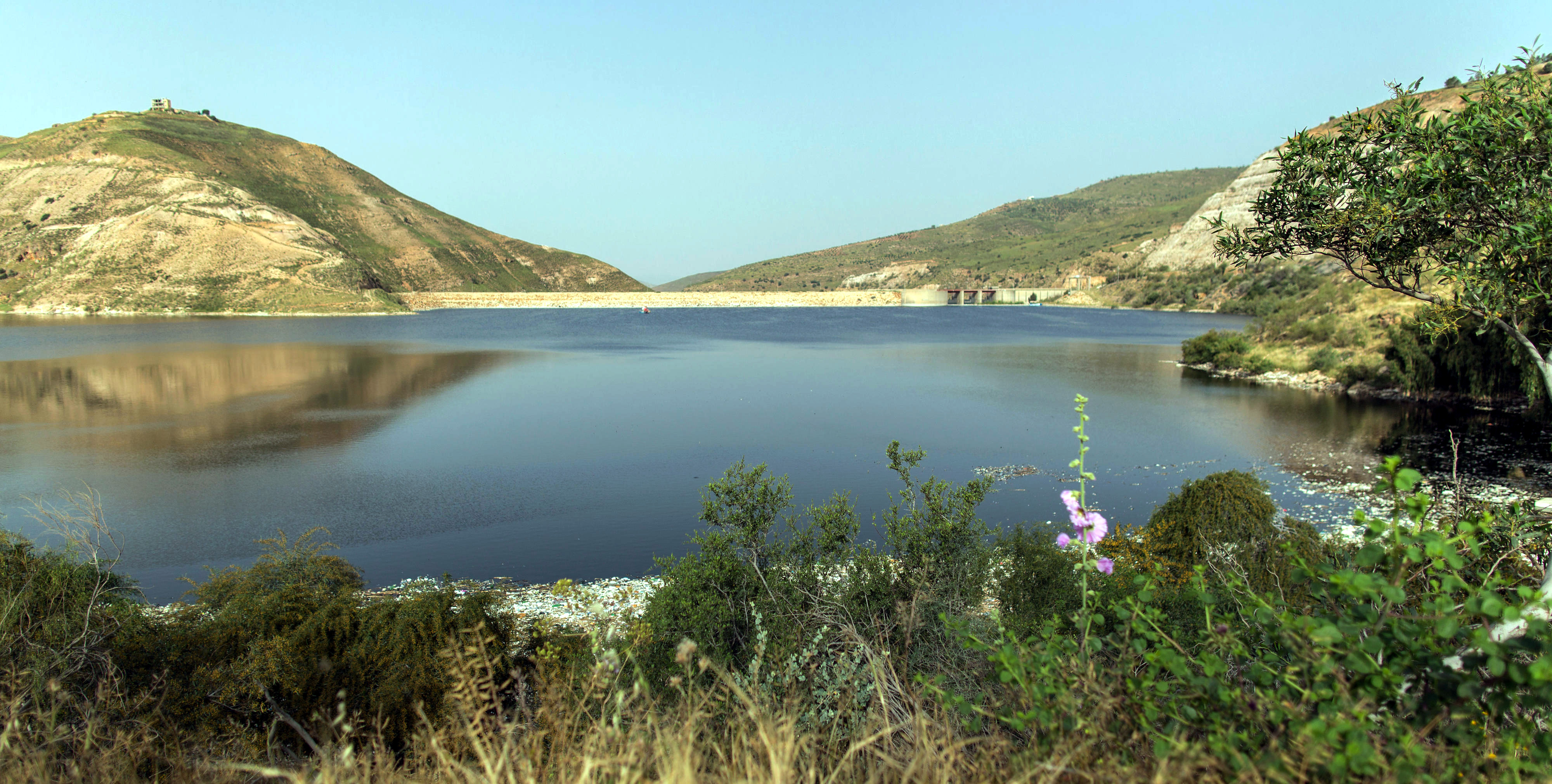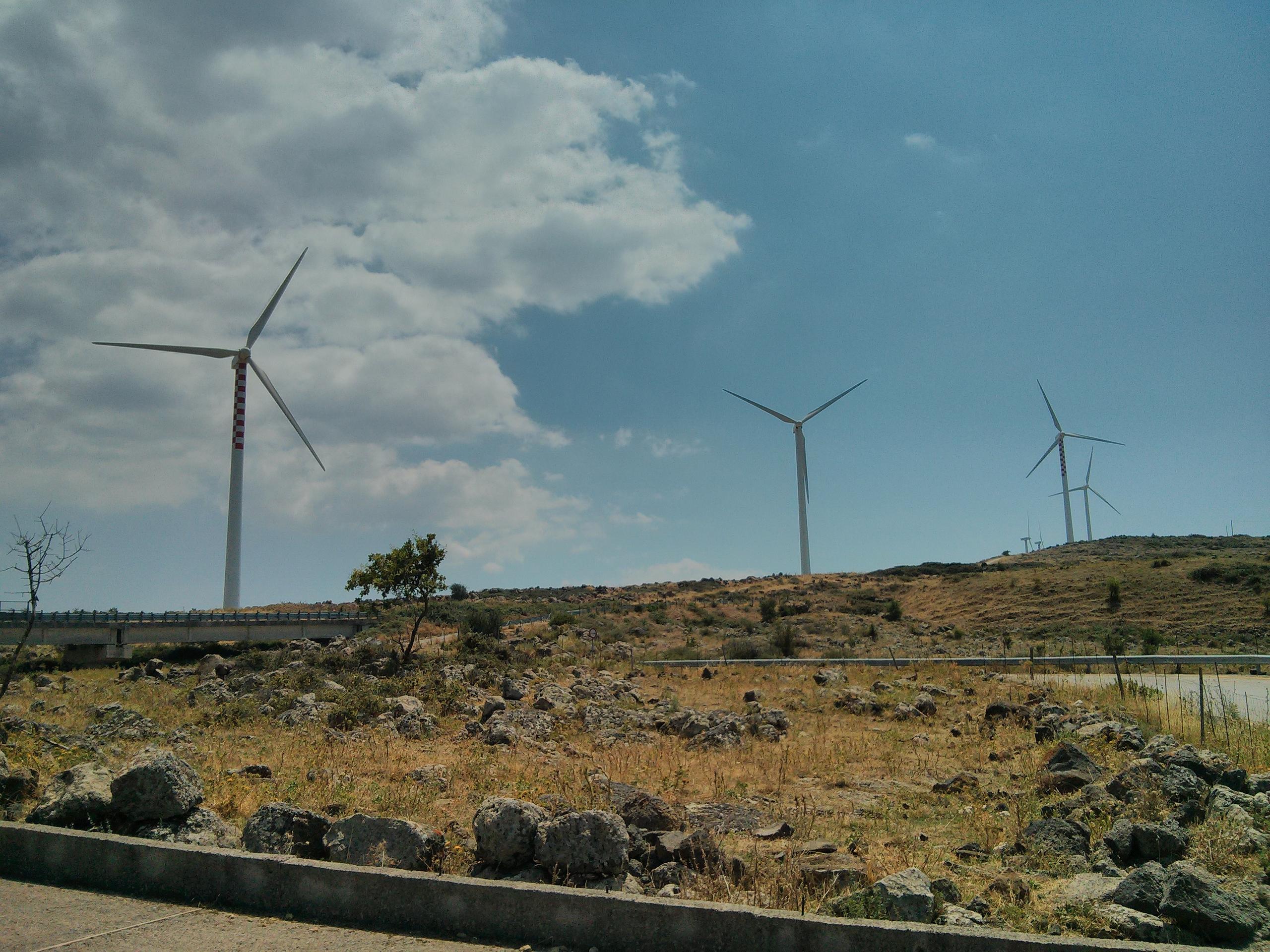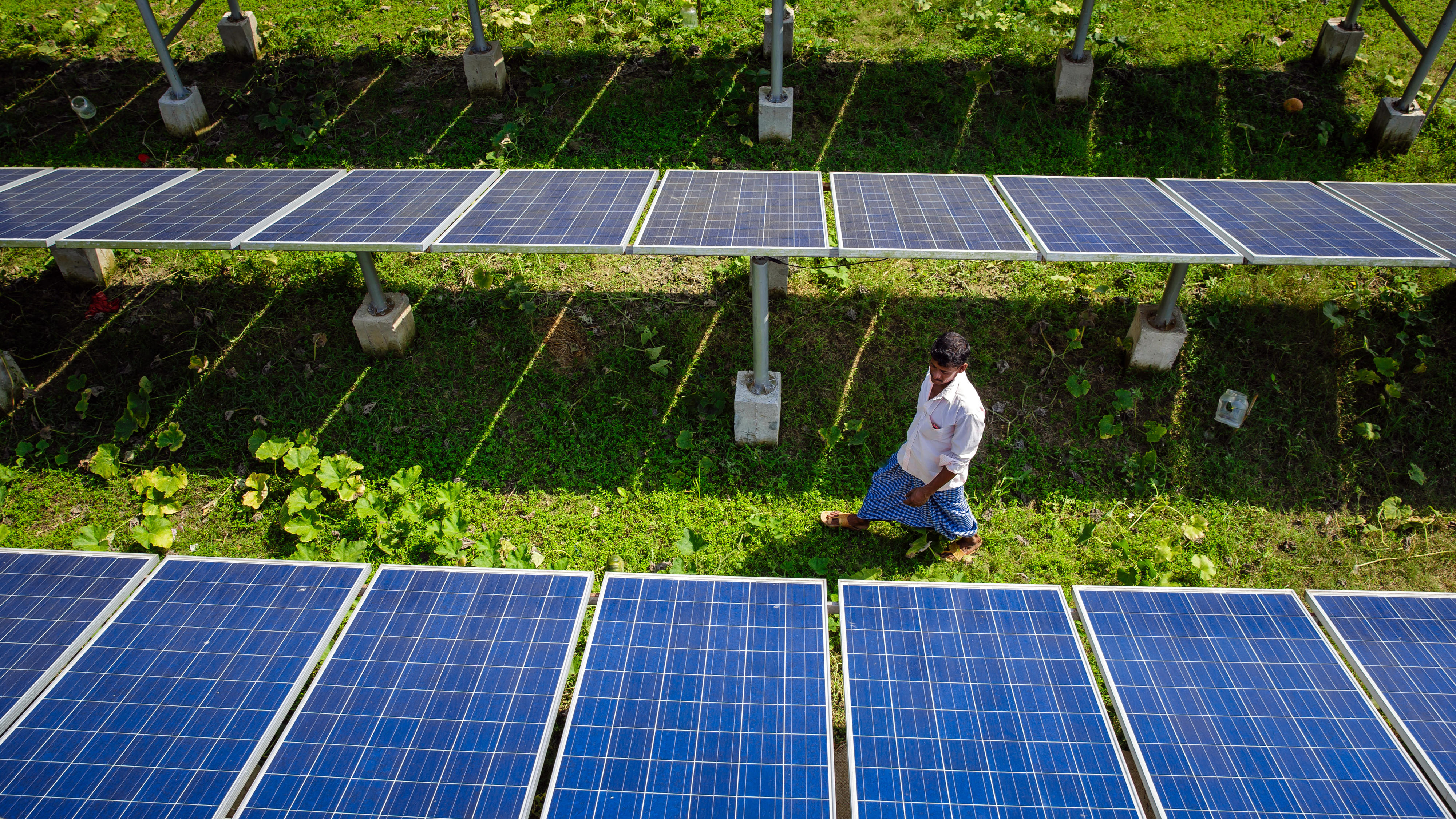View of a reservoir with dam wall at the King Talal Dam, Jordan
Copyright© Thomas Imo/photothek.net
Nexus approach Water and energy
Water for energy
Water is an indispensable input for energy supply. It powers the turbines of hydropower plants, it is needed as a cooling agent for coal-fired, gas-fired and nuclear power plants, and it is required for irrigating crops grown for biodiesel or biogas. Water is also an essential element in the production of solar cells and in the operation of solar thermal power plants, and it is needed for mining fossil fuels.
Hydropower is becoming increasingly important as a renewable source of energy. However, in planning dam projects, social and environmental aspects need to be taken into account alongside economic interests. The creation of reservoirs has an impact on biodiversity and may mean that villages have to be relocated. Dams are also a source of conflict over water use, including with other riparian countries. Where water is held back by a dam for the purpose of generating energy, this may negatively affect the availability of water for irrigation downstream.
Using water in a coordinated and efficient way can help to reduce conflict between user groups. The BMZ supports, for example, efforts in the Middle East and North Africa to develop plans and strategies for joint water management. For the construction of the first major solar thermal power plant in Morocco, an analysis of water needs was carried out at an early stage of the project and a dialogue with representatives from the water sector and from irrigated agriculture was facilitated.
Energy for water
Solar system to power a solar-powered pump for irrigating fields in Bangladesh
We not only use water to generate energy, we also need energy for water supply – we need it for water extraction, transport, treatment and desalination and, in particular, for heating water for household and industrial use. It is estimated that energy consumption in the water sector might double by 2040. At the same time, measures to boost energy efficiency and energy recovery in the water and wastewater sector offer great opportunities for reducing energy consumption and greenhouse gas emissions.
Drinking water. The desalination of seawater and brackish water is a very promising way of securing future drinking water supply, especially in coastal regions. However, this process requires a lot of energy. Using solar or wind energy is one way of harnessing this potential without generating greenhouse gas emissions. However, even though some technological progress has been made, managing the disposal of the desalination brine is still a challenge at this point.
Wastewater. Wastewater treatment plants are the biggest users of electricity at the local level. They require more energy than schools, hospitals or any other municipal facilities. However, modern treatment plants use the wastewater as a source of energy. For instance, anaerobic digestion, a process which uses bacteria, can turn sewage sludge into wastewater biosolids and biogas. Instead of being burnt off, the biogas can be recovered and used to generate power.
Interactions and interdependencies. Energy costs have a huge impact on water consumption. If energy is subsidised, farmers have lower operating costs for diesel-powered pumps. This enables them to irrigate their fields all year and thus increase their harvest. In many countries, such subsidies therefore serve as an instrument to fight hunger and poverty, and promote economic development.
However, if energy is cheap or free, there is no motivation to use water efficiently and sustainably and, ideally, reduce its use.
In order to make the use of energy in agriculture viable for the future, German development cooperation projects are promoting solar-powered irrigation techniques (External link) – for instance under the multi-donor Energising Development partnership.
As at: 13/06/2024


